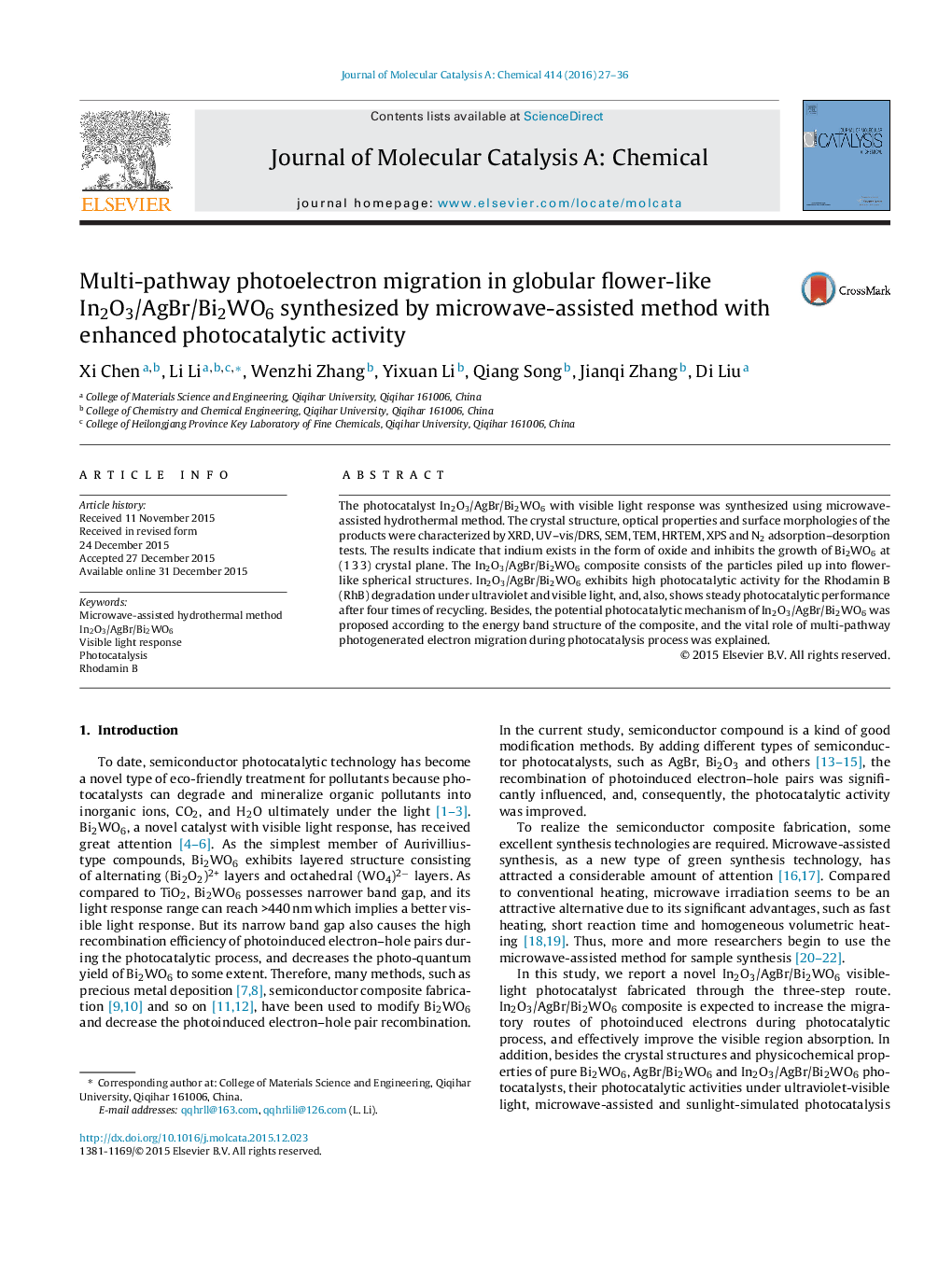| Article ID | Journal | Published Year | Pages | File Type |
|---|---|---|---|---|
| 64725 | Journal of Molecular Catalysis A: Chemical | 2016 | 10 Pages |
•The In2O3/AgBr/Bi2WO6 was successfully synthesized under microwave irradiation.•The as-prepared In2O3/AgBr/Bi2WO6 displays well flower-like spherical structure.•In2O3/AgBr/Bi2WO6 performs the highest photocatalytic activities to degrade RhB.•The multi-pathway photoelectron migration inhibits the recombination of electron–hole pairs.
The photocatalyst In2O3/AgBr/Bi2WO6 with visible light response was synthesized using microwave-assisted hydrothermal method. The crystal structure, optical properties and surface morphologies of the products were characterized by XRD, UV–vis/DRS, SEM, TEM, HRTEM, XPS and N2 adsorption–desorption tests. The results indicate that indium exists in the form of oxide and inhibits the growth of Bi2WO6 at (1 3 3) crystal plane. The In2O3/AgBr/Bi2WO6 composite consists of the particles piled up into flower-like spherical structures. In2O3/AgBr/Bi2WO6 exhibits high photocatalytic activity for the Rhodamin B (RhB) degradation under ultraviolet and visible light, and, also, shows steady photocatalytic performance after four times of recycling. Besides, the potential photocatalytic mechanism of In2O3/AgBr/Bi2WO6 was proposed according to the energy band structure of the composite, and the vital role of multi-pathway photogenerated electron migration during photocatalysis process was explained.
Graphical abstractGlobular flower-like In2O3/AgBr/Bi2WO6 with photoelectronic multi-way migration characteristic performed the high photocatalytic activities to degrade Rhodamin B under multi-mode.Figure optionsDownload full-size imageDownload high-quality image (236 K)Download as PowerPoint slide
